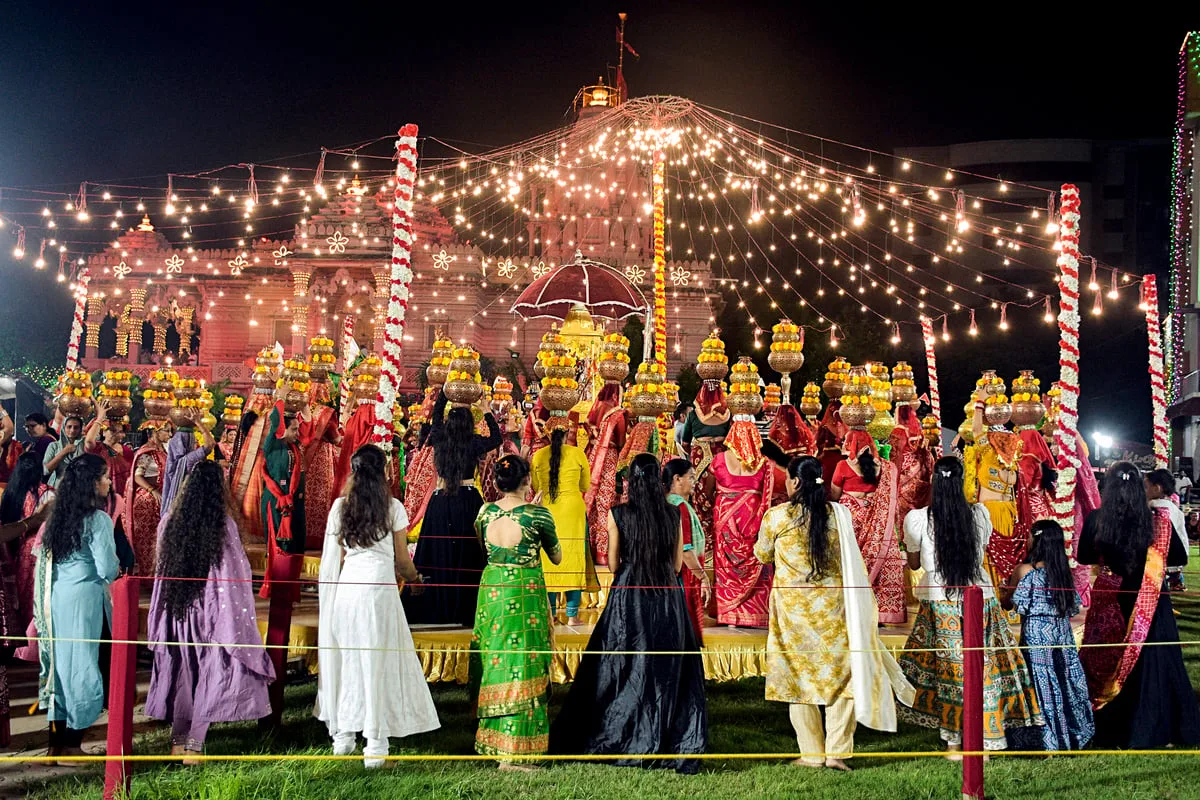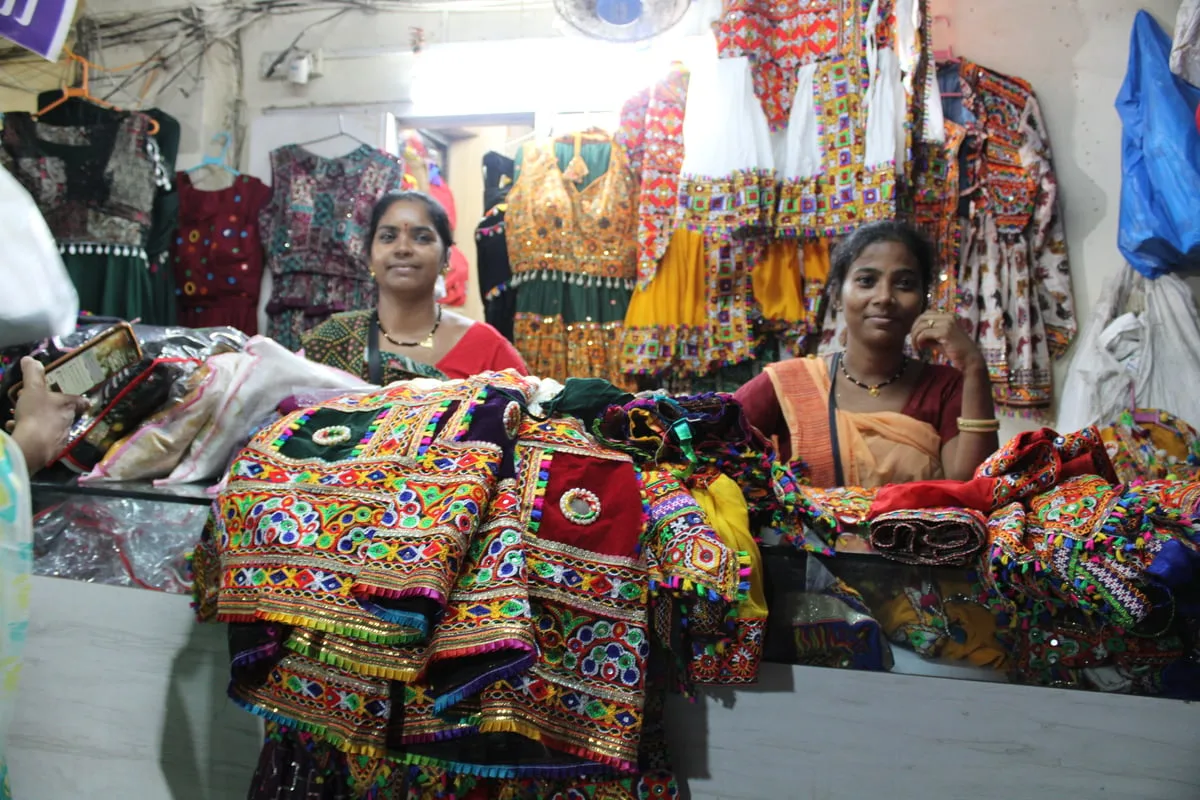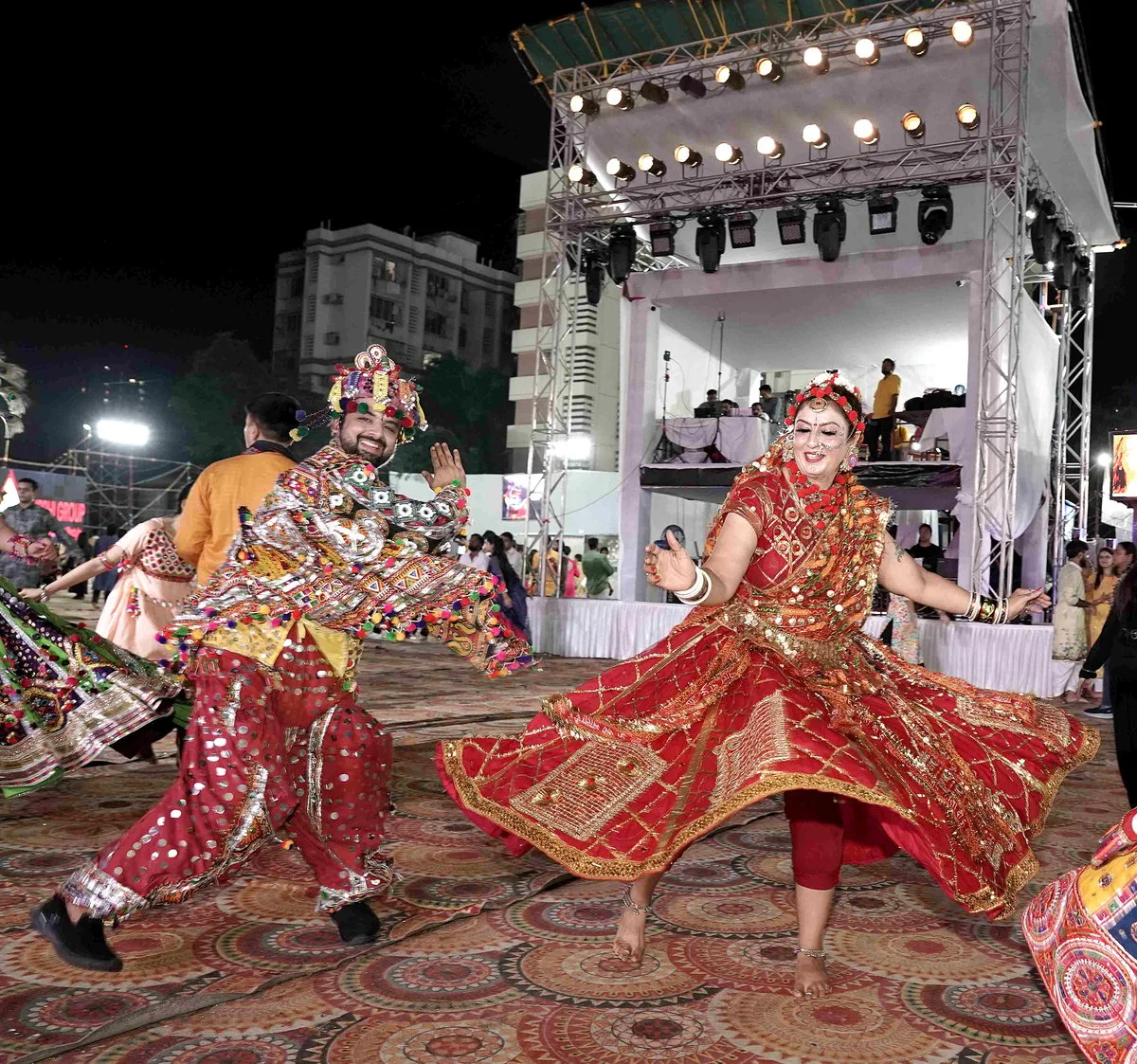Garba fever has started. Garment markets of Mumbai are glittering with colourful clothes and accessories. People are decked up in vibrant traditional attires, jewelleries and head gears. The inspiration behind the traditions of these vibrant clothes and dance lies in a community that is rich in art and culture.
“The Kathi community is one of the Rajputs who ruled the present day Saurashtra region of Gujarat. People coming from that region are called Kathiawaris. The traditions and cultures of different communities of the region have their own traditions, rituals, beliefs, folk dances viz. Maniyaro raas is performed by the Mer community, tippani is performed by the Koli community, the Dandiya raas and Mataji na garba, rasdo, dakla raas etc.are also performed by different communities of this region,” says Puffy Dave, Associate professor of English at Junagadh Agricultural University, Gujarat.
She further explains, “This culture of Dandiya raas, garba wearing the traditional dresses of the different communities of Kathiawar has not only influenced the young and old of Gujarat but has influenced world wide. We find this influence during the Navratri festival also. Navratri festival is celebrated for the different Goddesses of Indian religion. In Kathiawar, it is believed and is a folklore that Lord Krishna himself used to perform raas with Gopis.”
The origin

Kathiawari community consists of many sects. “People from different regions have come together and settled in Kathiawar. They are known as Kathiawari community,” says well known folk artist of Gujarat and Padma Shri award winner Joravarsinh Jadav who has done his MA history and culture in Ahmedabad. Jadav was awarded Padma Shri for his work in 2019.
The community is classified as the Other Backward Class of Gujarat and has a profound impact on the art and culture of society, especially during Navratri.
Kathiawari comprises many sects. A few of them being Bharwad, Rabari, Kathi, Kharak, Aahir and Mer. “The culture kept getting exchanged among these Kathiawari communities. Kathi community is the oldest of all sects of Kathiawar community. They did Moti kala and Katau kala,” says Historian, Dr Praduman Khachar. The area which is also known as Saurashtra, exchanged cultures during festivals and that’s how the culture started spreading. “The Charan and Barot sects kept travelling and as they travelled the country, their art and culture followed them. The singers and storytellers (Dhathi leela) also went from place to place spreading their art and culture.”
Niraj Voralia, a film editor who worked on several films like Aurangzeb, A Breath and Nadi Vahate, has his roots in Kathiawar community. He talks about how some of his fond memories were shaped by the folk music of Kathiawar. “One thing that was very alive was the folk music. When I used to go to the terrace of my house in Gujarat, I sometimes got to hear folk music or bhajans being played by someone nearby. There were all night shows where you could just go and they would welcome you to sit and listen. They would offer tea. There would be some people using humour in singing,” he shares.
Traditional attires

Kathiawari dresses flood the market every Navratri. People wear traditional odhnis, kotis or jackets and lehengas. The embroidery done on these dresses are usually inspired by the traditional dresses of the Kathiawari community.
Kanchan Chekhaliya, a Kathiawari from Gujarat, makes and sells Kathiawari dresses. She talks about her inspiration, “Growing up I saw these traditional dresses and that’s where I got the ideas for design.”
“Kathiawari embroidery is famous,” says Milan Lunagariya, an artist, printmaker who has interned as Kathiawari embroiderer. “You can see an influence of Kathiawar embroidery in clothes, door hangings and other handicrafts. The Kathiawari dresses are influenced by the tribals. They gradually developed the design and turned it into embroidery.”
Garba and dandiya

“Earlier garba was a lot simpler. It was women dancing around the holy vessel of the Goddess, called garbdeep. Back in the days the garba songs included a lot of folk stories and devotional elements as compared to the garba songs we listen to now. The garba we see now has a lot of Bollywood tracks,” says Milan Lunagariya. In the bustling city of Mumbai, Disha, a young girl working with her father, selling the traditional attires of Kathiawar talks about how she prefers the traditional garbas as compared to the ones played in the city, “In the village they use traditional dhols and other music instruments for music. However in the city, they just put on the songs or get a DJ. Also, unlike villages the grounds here are usually very crowded.” Disha Rathod, a Kathiawari, has been selling the traditional Kathiawari chaniya cholis on the streets of Mumbai for the past five years.
Fading Kathiawar culture
The rich culture needs to be kept alive in today’s time. “The culture is slowly fading. There’s a lot of difference between the culture of the past and now. It is getting destroyed. People don’t like staying in the village,” says Lunagariya. There are some artists who still support and try to preserve the rich art of Kathiawar. “I was a farmer’s son. People of different sects of Kathiawari used to come to our farm. I saw Ramleela, Bhavai, Bhauroopi among many other art forms. Being exposed to art and culture at a young age I inculcated those artistic qualities. After completing my MA in Bharatiya Sanskruti, I started my journey to encourage folk art and artists. We do many programmes on folk art,” says folk artist and Joravarsinh Jadav.
Jadav, however, seems like one of the few who are trying to save the fading glory.

